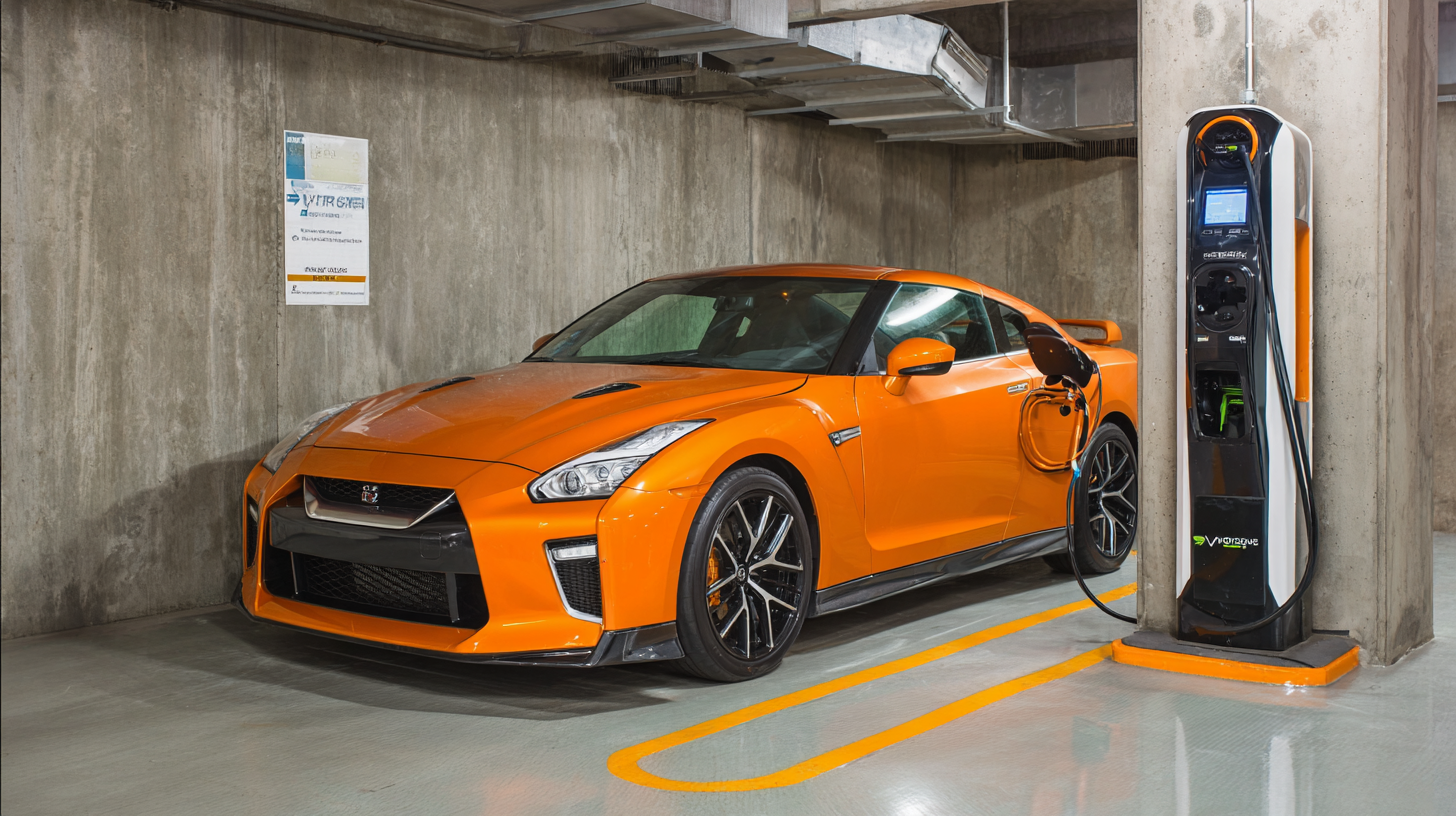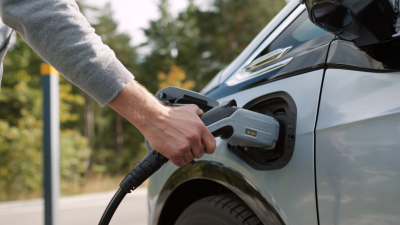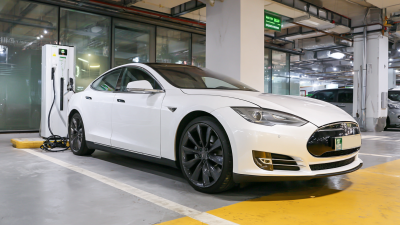As electric vehicles (EVs) continue to gain popularity, many homeowners are considering the installation of an EV wall charger at home to streamline their charging experience. Understanding the benefits of having an EV wall charger is crucial for anyone looking to enhance their electric vehicle ownership. Not only does having a dedicated charger offer convenience and flexibility in charging times, but it also plays a significant role in reducing overall electricity costs. Moreover, an EV wall charger can increase the value of your home while providing a sustainable and eco-friendly alternative to traditional gasoline vehicles.

In this article, we will explore the essential steps and considerations involved in installing an EV wall charger, highlighting the numerous advantages that come with making this investment for your home and environment.
Installing a home EV wall charger offers numerous benefits, particularly in terms of convenience and cost savings. According to a study by the U.S. Department of Energy, over 80% of EV charging occurs at home, highlighting the practicality of having a dedicated charger. With a home charging station, owners can charge their vehicles overnight, ensuring that they start each day with a full battery. This eliminates the time-consuming trips to public charging stations and provides peace of mind for daily commutes.
Moreover, having a home EV charger can lead to significant financial savings. The Electric Power Research Institute (EPRI) estimates that charging at home can be up to 60% cheaper compared to using public chargers, especially when taking advantage of off-peak electricity rates. Additionally, various state and federal incentives are available to homeowners who install EV chargers, further enhancing the financial advantages. These incentives can reduce installation costs, making it a wise investment for those looking to embrace electric vehicle technology.

When considering the installation of an EV wall charger at home, several key factors must be taken into account to maximize efficiency and convenience. First, the charging speed plays a significant role. According to the U.S. Department of Energy, Level 2 chargers can provide 10 to 60 miles of range per hour of charging, compared to Level 1 chargers that may only offer 4 to 5 miles per hour. Homeowners should evaluate their driving habits and select a charger that meets their daily needs without extended downtime.

Another critical consideration is the electrical capacity of the home. Many residences may require an electrical panel upgrade to accommodate the additional load of a wall charger. A recent study by the Electric Power Research Institute (EPRI) indicates that homes equipped with an EV charger may see a 20% increase in overall energy consumption. Therefore, it's essential to consult with a qualified electrician to assess existing infrastructure and determine the best installation approach. Additionally, understanding local incentives, such as rebates or tax credits, can significantly impact the initial investment, making it vital for homeowners to research and leverage available financial benefits.
Installing an EV wall charger at home can significantly enhance your electric vehicle ownership experience. The first step in the installation process is to assess your electrical system. Determine the amperage of your existing electrical panel and consider hiring a licensed electrician to ensure your setup can accommodate the additional load from the charger. This helps in avoiding potential electrical issues and ensures safety.
Tips: Before you begin, research the different types of EV chargers available to choose the one that best fits your needs. Level 2 chargers are typically the most efficient option for home use, allowing for faster charging times. Additionally, check if your local government offers any incentives or rebates for installing EV chargers, as this can help offset costs.
Next, select a suitable location for your charger. Ideally, it should be near where you park your vehicle, preferably in the garage or on a driveway wall. After choosing the location, work with your electrician to properly install the unit, ensuring all electrical codes are met. The final step involves testing the charger to confirm that it operates correctly and efficiently. Regular maintenance checks are recommended to ensure optimal performance over time.
| Feature | Benefit | Considerations |
|---|---|---|
| Convenience | Charge your vehicle overnight without needing to visit a public station. | Ensure you have a dedicated parking space. |
| Cost Savings | Potentially lower electricity rates compared to public charging stations. | Consider local electricity rates and your EV's charging capacity. |
| Increased Home Value | Installing an EV charger can make your home more attractive to buyers. | Check market demand for EV charging in your area. |
| Sustainability | Supports the transition to greener, cleaner transportation. | Ensure your electricity is sourced from renewable options if available. |
| Charging Speed | Home chargers can offer faster charging times compared to standard outlets. | Select a charger that matches your vehicle's capability for optimal efficiency. |
When it comes to installing an EV wall charger at home, choosing the right charger is crucial for maximizing both convenience and efficiency. One of the primary options available is the Level 1 charger, which uses a standard 120-volt outlet. While this option is easy to set up and doesn't require special wiring, it is generally slower, providing about 4-5 miles of range per hour of charging. This may be suitable for drivers with shorter daily commutes but can be limiting for those with longer ranges or who frequently take extended trips.
For those who need faster charging solutions, Level 2 chargers are the way to go. These chargers operate on a 240-volt outlet and can deliver up to 25 miles of range per hour, significantly reducing charging time. With various amperage ratings available, consumers can select a Level 2 charger that suits their vehicle's requirements and electrical capacity at home.
Additionally, some models offer smart features that allow for remote monitoring and scheduling, ensuring that the charging process is as efficient as possible. Ultimately, understanding the different charger types and their compatibility with your electric vehicle can enhance your EV experience and maximize the benefits of home charging.
Installing an EV wall charger at home brings numerous advantages, particularly when it comes to maximizing efficiency in your charging setup. A dedicated wall charger allows faster charging times compared to standard outlets, which can significantly reduce the time your vehicle spends plugged in. This is especially beneficial for those with busy schedules, as a Level 2 charger can replenish the battery much quicker, ensuring that your electric vehicle is ready to go whenever you are.
Moreover, optimizing your home EV charging involves not just the installation of a wall charger but also smart management of charging times. By taking advantage of off-peak electricity rates, homeowners can save money while minimizing stress on the grid. Features like scheduling charging times through smart home systems further enhance efficiency, allowing you to charge your vehicle during hours when energy is cheaper and more abundant. Overall, a well-planned EV wall charging system can increase convenience and lower costs, supporting a more sustainable lifestyle.
This chart illustrates the various benefits of installing an EV wall charger at home, including cost savings, convenience, increased home value, positive environmental impact, and time savings. Each benefit is represented as a percentage, reflecting its importance for homeowners considering EV charging solutions.






